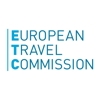European Tourism Resilient in Face of low Consumer Confidence

The European tourism sector successfully endured another challenging summer as worsening inflation and staff shortages threatened recovery. European airlines held up well, with August flight volumes down just 11% relative to 2019. Encouraging data suggests a positive outlook for 2022, with the region expected to recover close to 75% of 2019 inbound travel volumes this year.
This is according to the most recent edition of the ‘European Tourism Trends & Prospects’ quarterly report from the European Travel Commission (ETC), which predicts that Europe’s travel bounce-back will continue in the remaining months of 2022, led by cost-conscious and value-driven travel.
However, the winter will not be without its threats as a looming recession and higher inflation across Europe will weigh on consumer spending and tourism demand, delaying but not derailing recovery. The prolonged war in Ukraine and additional travel restrictions for Russian tourists across Europe will also push back the recovery in Eastern Europe.
Commenting following the publication of the report, Luís Araújo, ETC’s President, said: “European tourism is proving exceptionally resilient to inflation. While the cost-of-living crisis is causing many to change their approach to travel, it is not dampening their desire to explore Europe completely. Short-haul travel will be a lifeline for the sector over the next months, as more travellers opt for shorter and closer trips. As we continue to navigate the challenges brought about by global uncertainty, it is crucial to rebuild a sector that keeps sustainability front of mind.”
Low consumer confidence to drive short-haul travel
In the face of economic uncertainty and surging inflation, ETC predicts that travellers will favour short-haul trips, which tend to be more economical. This September, consumer confidence in France hit a nine-year low. Similar trends have also been witnessed in other major source markets, such as the UK and Germany.
Overall, the price of holidays will be a key deciding factor for households as they grapple with having less disposable income. This can be to Europe’s benefit as intra-European holidays, as well as domestic travel, tends to be cheaper than longer-haul alternatives. Short-haul travel currently makes up around 72% of total visits in Europe and is set to grow in popularity for the remainder of the year.
American holidaymakers capitalise on strong US dollar
Long-haul travel into Europe is still significantly depressed, hampered by restrictions and lingering negative sentimentfrom Asia and the Pacific. The Chinese market, in particular, has shown minimal progress towards a recovery due to the slower removal of travel restrictions.
Not all hope is lost for long-haul travel, however, as transatlantic tourism gets a boost from American holidaymakers benefitting from the strength of the US dollar – which has appreciated around 20% against the euro over the last year.
A strengthened dollar has already proven a lifeline to many European destinations, with the latest data showing that three in five reporting countries have recovered at least 70% of 2019 US travel volumes so far this year. A number of destinations exceeded 2019 travel demand. Turkey (+61%) saw the strongest rebound, followed by Portugal (+17%), Lithuania (+7%), Montenegro (+6%) and Poland (+6%).
The full report can be downloaded from ETC here.
